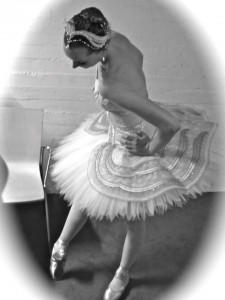Courtesy: Jen Guest
I thank the heavens every day for my working world. Clinically I divide my time between Pilates, Pelvic Floor Physiotherapy and Dance Physiotherapy . Well that works well doesn’t it? My job should be easy, since the three are so closely linked together.
In theory, I really should have minimal to do all day.
In my earlier days, I would make the terrible assumption that Dancers were completely in tune with their cylinder of control but no, it is quite the opposite for so many of them. And this is unfortunate as it leads to so many of their injuries. These injures could have been prevented if only we had the opportunity to get to them at a younger age.
Dance syllabus does require great core control, but the concepts are very difficult for the younger cognition. The teachers can teach beautiful repertoire and see whether a student has a problem with alignment or control, but may not necessarily understand how to cue the corrections properly. Unless of course they have the added recognized qualification in Pilates Practice.
When working with a dancer we must never assume they know how to activate their Transverse Abdominis or their Pelvic Floor Muscles correctly. When assessing these clients on Real Time Ultrasound, a very high percentage actually over activate and recruit the obliques far too quickly.
The little peeps have spent years attempting to tuck their bottoms under and pull up through their tummies to achieve a ballet back. Unfortunately they also develop the Bubble Butt (overactive Gluteus Maximus) and feel faint from breath holding! Since they are working too hard through Gluteus Maximus, they tend to lock up at the hip joint and loose the ability to access their structural turn out (Hip External Rotation) range. The Psoas and Iliacus fight against the hip extension in an attempt to maintain balance creating shortened hip flexors and an inhibition to pelvic-hip disassociation.
This also creates a tendency to an anterior pelvic tilt and therefore the glutes have to work harder; the bad cycle continues.
The most basic of Pilates exercises are essential with these clients to teach them how to work with as little effort as possible. We need to work them in a supported position where they can spend the time feeling the deep smaller glide of TVA, develop basal breathing patterns and often lessen the activity of the Iliopspas. Incorporate any of our supported hip disassociation exercises; supine 90/90, the dead bug, femur arcs, footwork on the Reformer or Tower Bar are a great start.
You will need to spend time ensuring that they do not over recruit the Obliques or Psoas and it is also a nice time to check on the Pelvic Floor through verbal cuing; it is to be a subtle lift but not an overgrip. The condition of hyperactive Pelvic Floor Muscles is fast becoming as much a concern as Pelvic Floor Muscle weakness.
When attempting to achieve turn out, we so often see the dancer rotating out from the ankle, planting the feet and then pulling up through the legs creating quite a torsion at the knee joint. W e need to teach them correct sequencing of muscles to create femoral external rotation. Any exercises that utilize T V A, Gluteus medius/ minimus and then Gluteus Maximus and Hamstring work would be beneficial. The Bridge, The Scooter, Standing Leg Pump at the Chair, any of our footwork exercises. This will teach them to gain the turn out from the pelvis. Remember Joseph stating ‘the Pelvis is the handle to all movement’. Along with this, they will need to focus on adductor activation, as they have spent much of their time working in turn out only and have a tendency to lose any concept of adduction connection.
Moving up to the lumbar spine, we see they are generally quite hyper mobile into extension, but not often balanced with control of the movement. Here I see a hinging at the lumbosacral junction into extension and at the hips into flexion. The upper lumbar segments are often quite stiffened. Articulation work into flexion through this area is great, utilizing the bridge, Hamstring 1-3, Kneeling Cat, Breathing, Roll Ups and Roll Downs. It is important to address eccentric control of articulation into extension; the Swans, Downstretch, Long Spine Massage. I love spine stretch as it is such a challenge to them, since they are so able to lay their bodies down onto their legs in long sitting due to the hamstring length. To work at elongating up and over through the spine is a great skill asset for a dancer.
Finally, thoracic stiffness develops from holding the arms through out the Port de Bras.
Work here addressing scapula connection through the Serratus Anterior and mobility through the mid thoracic segments is indicated; supine and prone scapular work, swans, the mermaid and any of the kneeling or standing arm work.
So next when you have a Dancer in, lets not challenge them with highly choreographed repertoire; instead lets push them to their neuromuscular limits with the basics!


Comments are closed.